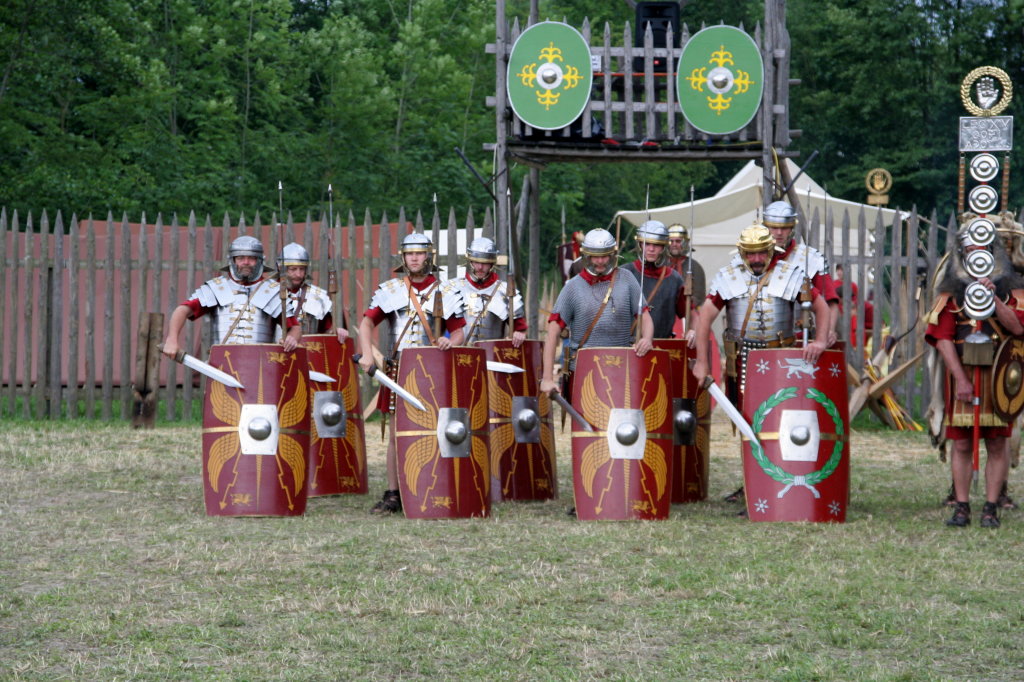As we continue to delve deeper into our series on the Armor of God as featured in Saint Paul’s letter to the Ephesians, this week we start to examine the specific pieces of armor that St. Paul references and compare it to a Roman centurion’s armor.
[featured-image single_newwindow=”false”] Photo by Matthias Kabel (Wikipedia)[/featured-image]
While we will see next week that St. Paul is most likely referring to God’s armor that was mentioned in the Old Testament, he also knew the audience he was writing to and gave them images that they could visualize.
Roman Military Armor
After illustrating the importance of divine armor that every Christian must put on, Paul becomes specific and makes a list of what this armor consists. The imagery Paul uses might remind someone of a great Roman centurion, poised and ready for battle. While writing his passage about the “armor of God,” Paul is writing to an audience that is well aware of the battle array of Roman soldiers.
Ephesus was known as a “leading city of the richest region of the Roman Empire” and “served as the administrative and commercial hub of Asia Minor.” (1) In addition to being an important city of the Roman Empire, Ephesus also hosted various gladiatorial fights in its stadium constructed during the reign of Nero. Roman military gear would have been readily visible and fresh in the minds of Paul’s audience.
St. Paul’s description of armor shares many similarities with the military gear that a Roman soldier would have worn. For example, “the armor of the Roman army…was mainly comprised of a shield, the scutum, and body armor that varied depending on rank and position, consisting of a breastplate and one greave, on the left leg.” (2)
Additionally, a Roman soldier would possess a helmet (depending on rank) and a sword known as the gladius. (3) Of particular interest is the shield, one of the most important assets in a Roman soldier’s arsenal. In battle, “when a legionary charged with the shield, he would…run towards the enemy with full force in an attempt to knock his foe over. He would then kneel behind the shield and fight from behind it.” (4)
This sheds new light on Paul’s description of the shield a Christian soldier must wield as the “shield of faith.” This is important as the concept of faith is a central part of Paul’s teaching throughout his letters. (5)
St. Paul knew that his audience, especially the Gentile Christians in Ephesus, had knowledge of Roman military gear and could visualize the comparisons. Yet, as we will see next week, the comparisons go only so far and St. Paul tries to drive home that this “armor of God” is linked to God’s armor as found in the Old Testament.
——————–
(1) Gerald F. Hawthorne, Ralph P. Martin, and Daniel G. Reid, eds., “Ephesians” in the Dictionary of Paul and His Letters: A Compendium of Contemporary Biblical Scholarship, (Downers Grove, IL: InterVarsity Press, 1993), 250.
(2) “Armor & Sheilds: Tools of War, Roman Military,” Ben Hollis, et. al, last modified in 1998, http://romanmilitary.net/tools/armor/
(3) Ibid.
(4) Ibid.
(5) Hawthorne, 285.

